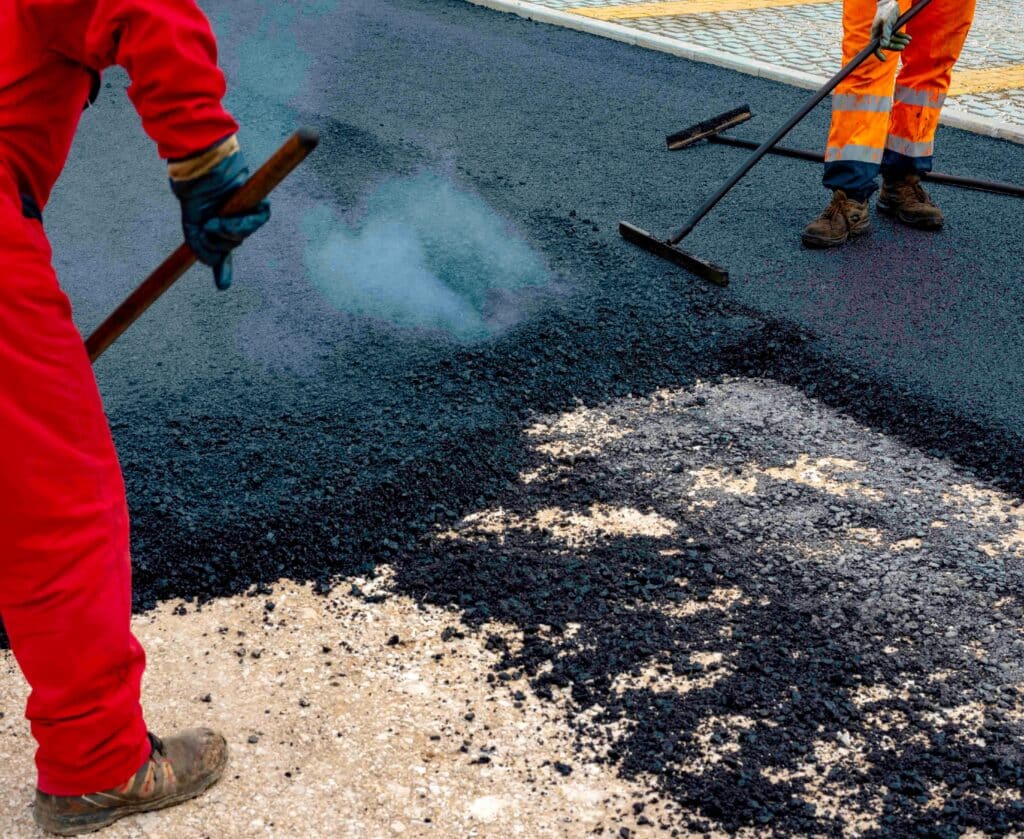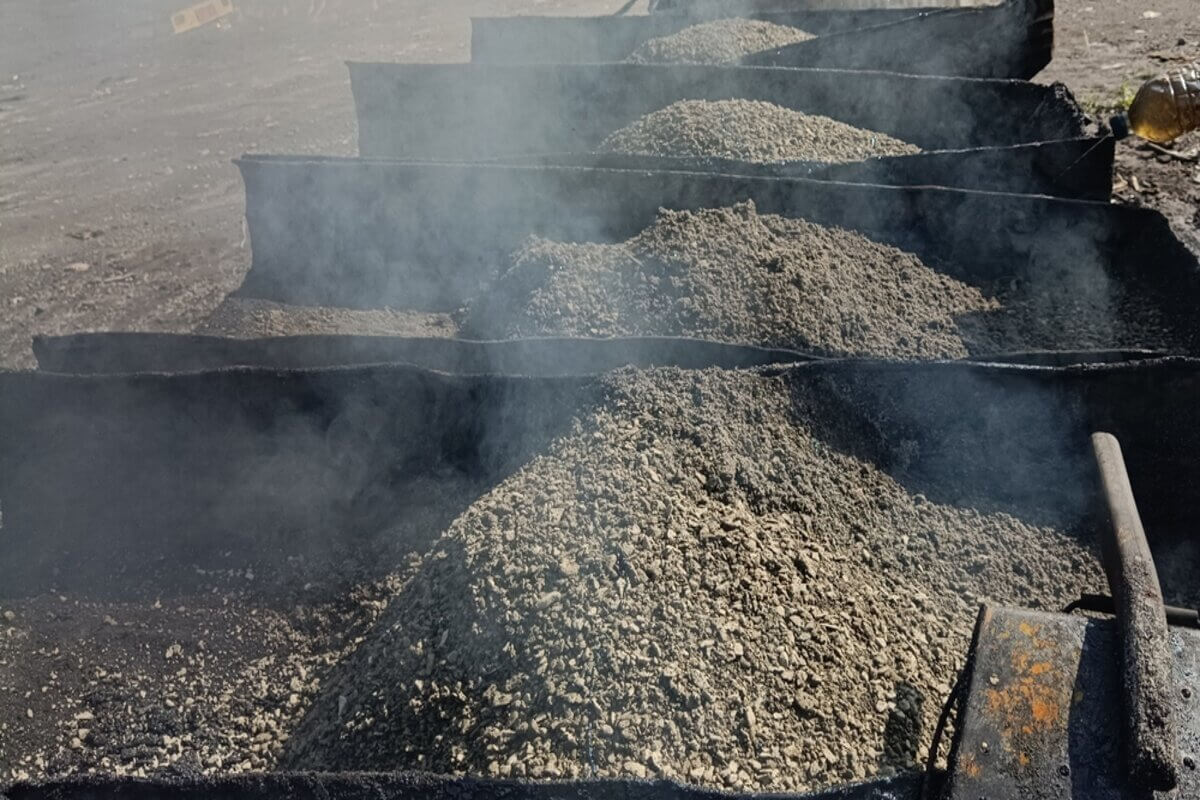Change Your Building's Landscape with Hot Mix Asphalt Paving Quality
Change Your Building's Landscape with Hot Mix Asphalt Paving Quality
Blog Article
Unlocking the Tricks of Hot Mix Asphalt Technology
Discovering the depths of hot mix asphalt modern technology uncovers a globe where precise procedures and exact formulations merge to shape our roadways and infrastructure. The blend of accumulations, fillers, and binders isn't simply a building task but a strategic orchestration of durability and performance.
Significance of Warm Mix Asphalt
Hot Mix Asphalt plays a crucial role in modern infrastructure growth due to its longevity and cost-effectiveness. As the most generally used leading material for roads, highways, and car park, Warm Mix Asphalt offers a variety of advantages that contribute to its importance in construction jobs. One crucial benefit is its capability to endure rush hour tons and harsh climate conditions, supplying a reputable and durable surface area for transportation networks. Furthermore, Warm Mix Asphalt is cost-efficient in both initial building and construction and long-lasting upkeep, making it a preferred selection for numerous framework tasks.
The durability of Hot Mix Asphalt comes from its structure, which consists of accumulations, binder, and filler products that are carefully picked and blended to meet specific performance requirements. This precise mix causes a strong and flexible pavement that can endure regular use without substantial deterioration. Warm Mix Asphalt is 100% recyclable, more boosting its sustainability and ecological benefits. In general, the significance of Warm Mix Asphalt in facilities development can not be underrated, as it continues to be a keystone of contemporary building and construction methods.
Elements of Asphalt Mixes
The composition of asphalt blends consists of thoroughly picked accumulations, binder, and filler products that are critical for attaining particular efficiency needs. Aggregates are the key component of asphalt blends, providing strength and security. The binder, normally asphalt or asphalt cement, holds the accumulations with each other and gives versatility and sturdiness to the mix.
The combination and proportion of these elements play a significant function in figuring out the quality and performance of the asphalt mix. Designers very carefully create the mix to satisfy specific needs, thinking about aspects like web traffic volume, environment problems, and sidewalk life-span. Proper option and balancing of aggregates, binder, and fillers are vital for developing durable, resilient asphalt pavements.
Mixing and Manufacturing Methods

When the accumulations are picked, the binder, usually asphalt cement, is added to bind the products with each other. The binder's top quality and quantity considerably affect the mix's strength, resistance, and flexibility to environmental factors. Furthermore, fillers like hydrated lime or Portland concrete might be incorporated to enhance certain features of the asphalt mix, such as its workability or wetness resistance.
Throughout production, the accumulations and binder are warmed, normally between 250-325 ° F(121-163 ° C ), to promote mixing and make sure appropriate coating of the aggregates. The blending procedure should be complete to accomplish an uniform blend that advertises the desired performance attributes of the asphalt. Various strategies, such as set blending or drum mixing, are utilized to accomplish regular and top quality asphalt mixes for building projects.
Factors Influencing Asphalt Performance
Variables affecting asphalt performance encompass a variety of variables that affect the resilience, durability, and total top quality of asphalt pavements. One key variable is the top quality of products used in the asphalt mix. The type and resource of accumulations, the binder quality, and the additives all play a considerable function in figuring out the efficiency of the asphalt pavement. The rank of accumulations is critical as it impacts the mix's resistance, security, and workability to rutting and fracturing. more information

Style factors to consider, such as sidewalk density and water drainage, are important in making sure the lasting efficiency of the asphalt sidewalk. By carefully thinking about these variables, designers and service providers can optimize asphalt efficiency and boost the solution life of pavements.
Lasting Practices in Asphalt Technology

In addition, the growth of warm-mix asphalt (WMA) modern technologies has actually obtained grip over the last few years. WMA permits for the manufacturing and placement of asphalt mixes at lower temperature levels compared to traditional hot-mix asphalt, resulting in lowered power intake and greenhouse gas discharges. The use of porous asphalt blends can aid alleviate stormwater overflow issues by permitting water to infiltrate official source through the sidewalk and into the ground, promoting natural water purification and charge processes. By implementing these lasting methods, the asphalt industry can add to developing a more durable and environmentally pleasant facilities network.
Conclusion
To conclude, hot mix asphalt innovation plays an essential function in modern-day infrastructure advancement as a result of its sturdiness and cost-effectiveness. By carefully balancing elements, utilizing correct blending techniques, and thinking about different aspects, designers can create premium asphalt blends that withstand rush hour loads and harsh weather. Embracing lasting techniques, such as making use of recycled products and warm-mix innovations, even more enhances the environmental kindness of asphalt modern technology.
Blending and production techniques in warm mix asphalt modern technology entail the exact combination and processing of aggregates, binder, and fillers to develop a high-performance and sturdy asphalt mix.Variables affecting asphalt performance incorporate an array of navigate to these guys variables that affect the sturdiness, durability, and overall top quality of asphalt sidewalks. Sustainable techniques in asphalt modern technology incorporate different efforts intended at lowering the environmental influence of asphalt manufacturing and paving processes. By integrating recovered asphalt pavement (RAP) and recycled asphalt tiles (RAS) right into brand-new asphalt blends, the market can considerably reduce the intake of raw materials and power, while also lowering landfill waste.
WMA permits for the production and positioning of asphalt mixes at lower temperature levels compared to typical hot-mix asphalt, resulting in decreased power consumption and greenhouse gas discharges.
Report this page